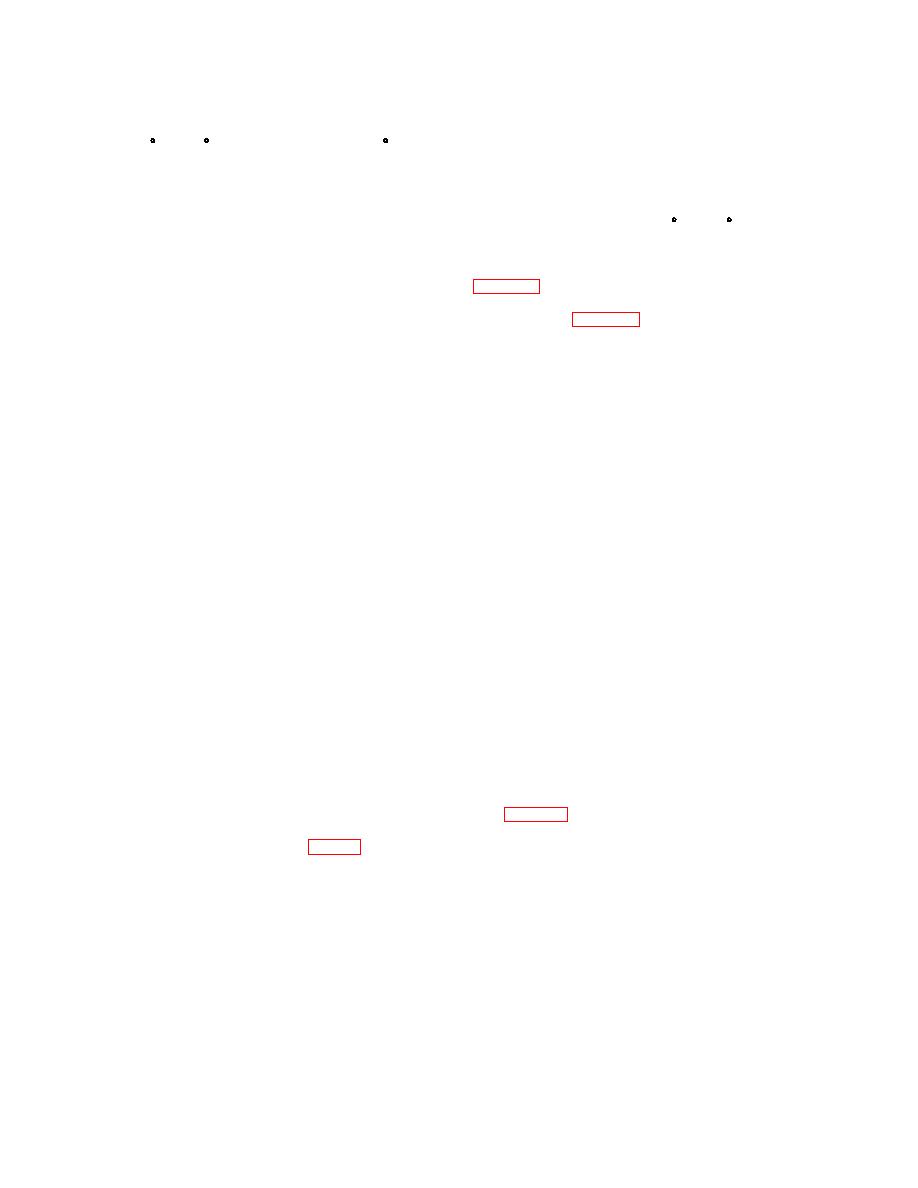
| Tweet |

Custom Search
|
|

|
||
 TM 55-1905-217-34
essential for sound welds. A forehand method of welding should be used and the weld metal deposited in beads with
limited oscillation not exceeding 11/2 times the diameter of the welding rod.
(13) Welding-Preheat and Stress Relief. Because copper-zinc alloys are susceptible to stress-corrosion or season
cracking, stress must be relieved, as the propeller can crack after being returned to service. The use of local preheat
above 400 F. (204 C.), preferably between 600 F. and 800F. (316C. and 427C.), will preclude the accumulation of
harmful stresses. Hot-flow welds and large gas welds are automatically preheated and slowly cooled, and stress relief can
be safely omitted after welding. Arc welds and small gas welds should be preheated with a torch or other suitable means
and then cooled slowly. If it is considered more desirable to stress relief after welding, the following procedure is
recommended. Heat slowly to 750F. (399C.) and hold at this temperature for at least 1 hour per inch of thickness of
metal in the welded area; cool slowly, approximately 2F., per minute, until metal is below 250 F. (121 C.), after which
air-cooling is permissible. During all preheating, welding, or stress relieving, the propeller should be well supported in
order to avoid sagging and distortion. Repairs, particularly to heavier sections of the propeller, should be performed with
care in order to avoid thermal cracks or tears due to shrinkage stresses which can be imposed on the base metal.
5-2. Propeller Shaft Assembly
b. Repair.
(1) Pitted Shafting. Cases of severe pitting in outboard shafting, resulting from damaged or porous covering,
should be reported to the appropriate authority who will decide whether the shaft is suitable for future service. If the pitted
shafting is approved for reconditioning, the sharp edges of the pits should be well rounded by grinding and the corroded
areas should be dressed down to the solid metal surface. Ground out pits and corroded areas, if extensive and of shallow
depth, should be filled with approved cavity build-up material. Pits and corroded areas beyond allowable depths should be
built-up by welding and covered with a protective rubber or plastic material.
(2) Vibration. If objectionable vibrations exist, the shafting sections should be removed and checked for
straightness. Dial indicator runouts of shafting ends, measured at the propeller or coupling tapers, should total less than
0.003 inch (0.0015-inch eccentricity), which should prevent excitation of the first-order vibrations (one vibration per shaft
revolution). Runouts in excess of 0.003 inch total, giving an unacceptable performance, must be rectified or replaced by a
new shaft section.
(3) Bent Shafting. Approval by the appropriate authority should be obtained prior to straightening severely bent
shafting. Repair to the shafting section can be done by the spot heating method, or electric induction heating, after which
the shaft is straightened by mechanically controlled forces.
(4) Cracks in Shafting. Cracks found in propulsion shafting should be thoroughly probed to determine the depth
and length of the cracks. If shafting is determined to be repairable, weld crack by an approved method.
(5) Eccentricity. The dial indicator runout for any length of shafting, with respect to the axis of rotation and
exclusive of journals and ends, should be limited to an eccentricity of approximately 0.003 inch. If, when the shafting is
rotated 360 degrees, runouts greater than this figure are found, this eccentricity should be reduced to the lowest possible
limit. A record should be kept of all installed shafting where eccentricities exceed 0.003 inch. Shafting should be replaced
if objectionable vibration is still present.
(6) Electrolytic Action. Zinc protector collars on the shafting should be replaced as necessary. Steel shafting that
is exposed to sea water should be protected from electrolyte action by a rubber or plastic protective covering when
electrolytic action occurs between the steel shaft and the bronze bearing journal sleeve.
(7) Plugging Shaft Ends. All shafting that is exposed to sea water and has been bored throughout its entire length
must have both ends plugged to prevent water from seeping into the hollow shaft and into the vessel. One method is by
tapping the shaft bore with a tapered pipe thread. In this method, a threaded plug is fitted and installed with thread
compound to insure the watertightness of the plug.
c. Alinement. Aline the propeller shaft. (TM 55-1905-217-12).
5-3. Stuffing Box
a. Removal. Remove the nuts (fig. 5-6) bolts, and mounting plates and remove the stuffing box from the shaft.
5-6
|
||
 |
||